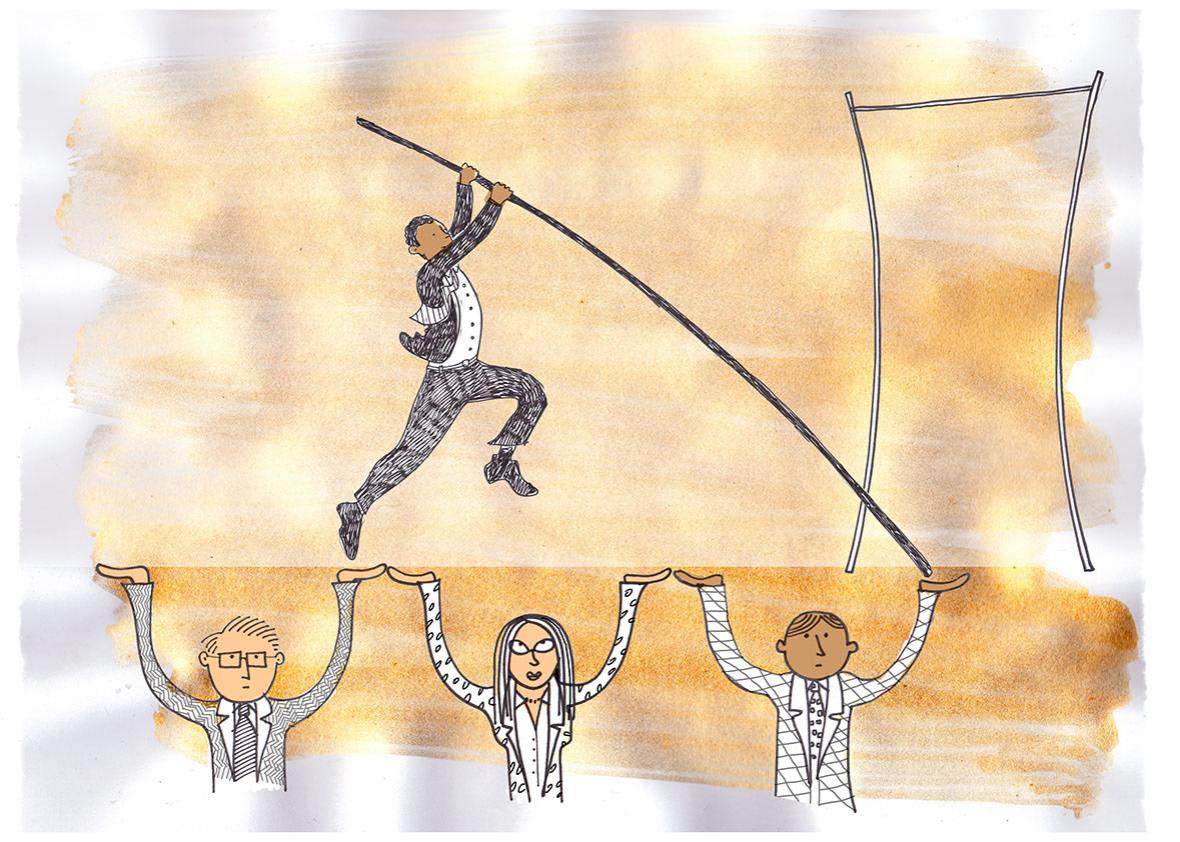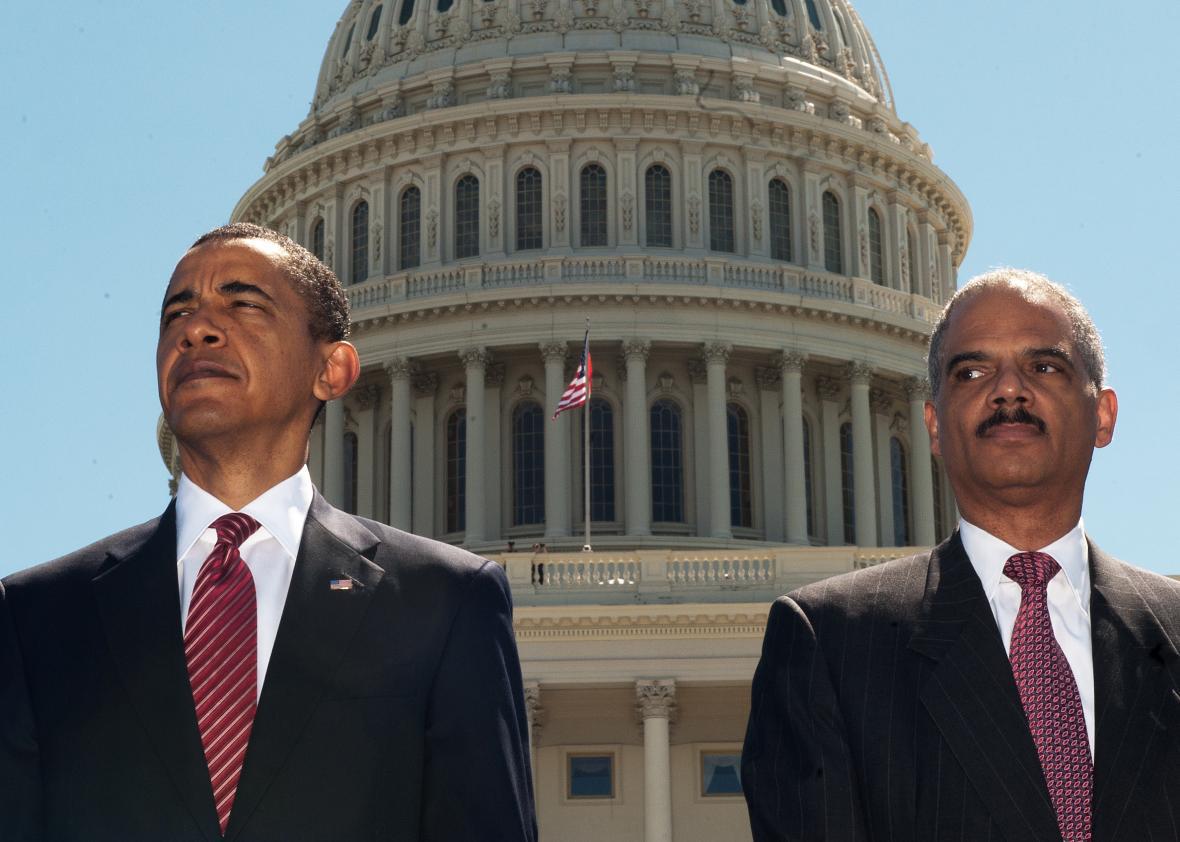This essay is reprinted with permission from the New Rambler Review, an online review of books.
In a testament to how law-dominated war has become, Charlie Savage’s Power Wars is a 698-page tome almost entirely about internal deliberations among Obama administration lawyers and national security officials about the “war on terrorism”—the second full-length treatment on this topic published during the Obama presidency. (The first was Daniel Klaidman’s Kill or Capture.) Savage is deeply sourced inside the Obama administration and has for years been writing authoritatively in the New York Times about the administration’s in-house legal theories and debates on controversial national security issues. His book builds considerably on his earlier reporting to present a rich blow-by-blow account of how and why the Obama administration determined the legality of its war-on-terrorism policies. (Disclosure: Power Wars discusses some of my work in the Bush administration, and I gave Savage comments on some draft chapters of the book.)
“Lawyerliness suffused the Obama administration” and “shaped Obama’s governance,” says Savage. The president and vice president were lawyers, as were several chiefs of staff and Cabinet members. The national security lawyers who advised these law-savvy policymakers were “some of the most important counterterrorism practitioners and legal scholars in the world,” according to Obama’s National Security Advisor Tom Donilon, himself a lawyer. These impressive lawyers had been “withering in their criticism of the Bush-Cheney legal team” for “having signed off on extreme and implausible legal pronouncements” related to national security. They came to office determined to be different. Donilon revived an “interagency national security lawyers group” to fix the “process failures” that “led to poor decisions” for President Bush. Intensive legal deliberation became central to national security policymaking. Savage says that in contrast to their predecessors, the Obama legal team tried “to fight al Qaeda while adhering to what they saw as the rule of law.”
And yet despite its commitment to rule of law, and to right process, and to not being like its predecessor, the Obama administration pulled back on very few counterterrorism practices after January 2009. The biggest change was formally ending the CIA’s detention and black site program, but that program had been defunct for years. Most of the new administration’s decisions preserved continuity. It maintained the war powers approach to counterterrorism; continued bulk surveillance, military detention, and military commissions (with tweaks); supported Bush-era state secrets cases and asserted the state secrets privilege in new cases; adopted Bush administration positions on the standard for rendition and against habeas corpus for overseas detainees; and failed to close the Guantánamo Bay detention center (but did stop sending new detainees there and did prosecute in civilian courts a few terrorists picked up abroad).
One reason why so little changed, Savage explains, is that “most of the rule-of-law problems” with Bush’s counterterrorism policies “had actually already been fixed” by 2009 as a result of judicial and congressional endorsement or pushback, as well as internal executive-branch self-corrections. Another was that the Bush administration had in some contexts “been much more serious about its responsibilities than [the Obama team] had thought.” Savage says that several Obama administration officials were surprised to learn, once gaining access to government files, that many detainees in GTMO were in fact too dangerous to release and that the Bush administration’s basis for asserting the state secrets privilege was thorough and convincing.
The Obama team also came to grasp the consequences of not stopping a homeland terrorist attack. Savage compellingly frames the first part of his book around Umar Farouk Abdulmutallab’s failed attempt to blow up a plane over Detroit on Christmas Day, 2009, which he describes as “Obama’s 9/11.” Behind the scenes the administration’s law enforcement response to the issue worked pretty well. But the near miss revealed weaknesses in the administration’s defenses against terrorists. And public gaffes by top officials made it seem like the administration did not appreciate the gravity of the terrorist threat. Republicans pounced. Led by former Vice President Cheney, they charged the administration with making the United States less safe by pretending it was not at war. The political fallout put a halt to Obama’s efforts to close GTMO, increase civilian trials, and enhance transparency.
The Christmas Day plot also changed the administration’s attitude toward counterterrorism operations. Attorney General Eric Holder “told his subordinates that it was time to rethink all kinds of terrorism-related policies.” And President Obama went from a “passive mode” to an active one. “Terrorism and the threat to the homeland went from a theoretical concern to something that the president understood could shape the course of his presidency,” Savage learned from Michael Leiter, who led the National Counterterrorism Center under Obama. “The president suddenly understood that in an instant, people could still be killed inside the United States by al-Qaeda and that such an event could have catastrophic political consequences for the rest of his agenda.” Soon after the failed Christmas bombing, “Obama grimly asked his team to imagine how the world would have been different had the bomb exploded.” Nearly 300 people would die, the transportation system and the economy would be wrecked, and his ambition to scale back U.S. involvement in the Middle East would go unrealized. Obama suggested he would fire people if the missteps surrounding the incident were repeated. “It’s strict liability now,” he said, echoing George Bush’s “Don’t ever let this happen again” directive to Attorney General John Ashcroft soon after 9/11.

Photo by Tim Coburn
Everyone, including the lawyers, got the message about the threat. Harold Koh, the human rights champion who from his perch at Yale Law School harshly criticized Bush administration legal policies, came to the top legal job in the Obama State Department uncomfortable with targeted killings. Savage reports that Koh looked hard at the classified evidence and discovered that “[t]here really were people out there actively plotting to kill innocent Americans, as the Christmas 2009 attack vividly demonstrated.” Koh received heat from his traditional allies in the academic and human rights communities when he robustly defended the legality of the Obama administration’s counterterrorism policies. According to Savage, Koh told his critical former colleagues at Yale, apparently without irony, that it was “easier to take purist stances from the faculty lounge than from a position of responsibility.”
Savage’s account of the Obama administration’s continuity with the Bush administration breaks less new ground than does his reconstruction of the many ways in which it expanded the president’s war powers from the Bush baseline. In Savage’s portrayal, the Obama lawyers often accommodated rather than restrained the president.
The drone strike program grew in intensity and geographical scope. The Obama lawyers approved the expansion with novel legal analyses that included support for the targeted killing of an American citizen (Anwar al-Awlaki). The lawyers extended executive precedents to approve the president’s use of force in Libya in 2011 and then later concluded that intensive lethal air strikes did not amount to “hostilities” that would have triggered a duty to cease military action under the War Powers Resolution. They also stretched the 2001 Authorization for Use of Military Force against al-Qaida to conclude that Congress had approved military action in 2014 against al-Qaida’s rival, the Islamic State. And they advised the president that he could invoke his exclusive Article II powers to disregard (among other laws) a congressional notice restriction that stood in the way of his desire to swap the Taliban Five for Bowe Bergdahl. Finally, the administration cracked down on leakers and the journalists to whom they leaked.
Perhaps more surprising than these and other lawyerly approvals of expanded presidential power were the breakdowns in the vaunted interagency lawyers process. That process did not prevent the lawyers from overlooking the criminal prohibition on killing Americans abroad in their original approval of the al-Awlaki operation. (Savage says a blogger pointed out the omission.) And the deliberation, consensus, and restraint promised by the process declined as power over legal issues shifted over the years from the Office of Legal Counsel in the Justice Department to the President’s Counsel and National Security Advisor in the White House. National Security Advisor Donilon didn’t allow the Justice Department to know about, much less opine on, the May 2, 2011, operation to kill Bin Laden. A few weeks later, the president ordered a continuation of the bombing campaign in Libya even though the lawyers group had reached consensus that doing so would violate the War Powers Resolution. Without reconvening the lawyers group and rejecting the views of the Justice Department, White House Counsel Bob Bauer cobbled together a new theory that he advised the president was “legally available,” a term Savage says means “not laughably off the wall.” Although Savage says at the beginning and end of his book that the Obama administration maintained a nearly dogmatic commitment to process and deliberation, he acknowledges—indeed, is the one who brought to light—these exceptions to that pattern as a challenge and a complication to this claim.

Illustration by Ozge Samanci
In sum, despite a clear intention to be different from their predecessors and frequent devotion to lawyerly values, the Obama lawyers were much less successful in pushing back against presidential power than anticipated, and they often supported novel expansions of presidential power. Time and time again the lawyers seemed to fudge, stretch, or retrofit the law to accommodate the imperatives of national security.
Power Wars will lead some to conclude that law and lawyers don’t matter much to national security. But I think that is the wrong conclusion. Savage naturally focuses on the sexiest high-stakes issues, where goals and consequences inform interpretation more than usual and where direct precedents are sparse. As one moves down the executive branch hierarchy, legal interpretation becomes more guided and restrained by settled law and tiered review. If we had a blow-by-blow insider account of Supreme Court decision-making on high-stakes issues, I doubt we would be impressed by the quality of deliberation or the extent to which law or precedent, considered in the abstract, governed outcomes. And yet the lower federal courts dispose of most legal issues they face through a straightforward application of settled law to fact. It would be a mistake to conclude that law is not terribly consequential in the judiciary based on Supreme Court practice. It is a similar mistake to conclude that law does not restrain mid- and low-level intelligence and military officers simply because it does not appear to restrain senior officials on the biggest questions.
It is also a mistake to conclude that law and lawyers do not restrain senior national security officials. What never shows up in books like Power Wars, and what the public never sees, are the scores of times that lawyers preempt operations and policies—in a phone call, conversation, or preliminary meeting—that are clearly out of bounds. Nor can we ever see the stream of dreamed up and potentially useful operations and policies that never make it to a conversation because the policymaker knows that the answer will be “no” and thus never asks. In these and related ways, law hems in the president’s decision-making by limiting the policy options that reach his desk. A complete assessment of the effect of law on senior national security decision-making would need to compare the questionable approvals and fudges we see against the much-harder-to-perceive instances that law constrains by limiting possible courses of action. Reporters cannot easily get at this latter type of information.
Savage does help us see another way that law constrains at the top. In a speech at Harvard University in 2011, Obama’s then-counterterrorism czar John Brennan stated: “The interagency lawyers will get together to look at what is being proposed and then have that discussion, that is very rich, about whether or not what is being proposed is consistent with the law and consistent with best practice, or are we actually sort of now going in new areas and new directions.” Such legal deliberation forces policymakers to confront how things have been done in the past and to better appreciate when and how they might be moving into novel, and thus controversial, territory. It also often forces them, when they propose a controversial operation, to justify why they need to use the proposed means and not some less controversial and more obviously lawful approach.
Consider the disagreement in 2010–2011 among top administration lawyers about whether al-Shabaab, the Islamist terrorist organization in Somalia, was an associated force of al-Qaida, in which case all of its members could be targeted, or not, in which case only individual members associated with al-Qaida could be targeted. Savage says that the “dispute was theoretical because in order to minimize blowback, the administration’s counterterrorism strategy was to target only individual Somalis believed to be involved in specific terrorist plots on American interests.” But this misses how law can inform strategy (and tactics), since the distinctions drawn by the lawyers almost certainly helped the policymakers to see that the government “had no interest,” as Brennan put it, in killing Somalis not associated with al-Qaida.
Though law operates in these hard-to-see ways to guide and constrain executive branch choices, Savage shows that law has not been terribly consequential in restraining large national security initiatives that the president deems important and that are “not laughably off the wall” from a legal perspective. In Libya, against ISIS, in supporting the drone strikes, and in many other contexts, the Obama lawyers prodded the law along to expand presidential power and support presidential action.
There is a single exception to this trend, a single context where the president fiercely desired to achieve an important national security goal but the lawyers do not appear to have yet given him the green light: closing the Guantánamo Bay detention center. President Obama really wants to fulfill his first-week-in-office pledge to shut down the Cuban facility and bring several dozen military detainees to the United States. But firm congressional prohibitions stand in the way. Prominent former Obama administration lawyers have urged the president to disregard these restrictions. Their arguments sound a lot like Bush-era executive power claims that they, and the president, once renounced. Will current administration lawyers agree with these arguments? Will they accommodate the president if he asks for permission to disregard the congressional restrictions? It tells us much about the evolving attitude of Obama and his lawyers toward the constraint of law that we do not know.
—
Power Wars: Inside Obama’s Post-9/11 Presidency by Charlie Savage. Little, Brown.
See all the pieces in this month’s Slate Book Review.
